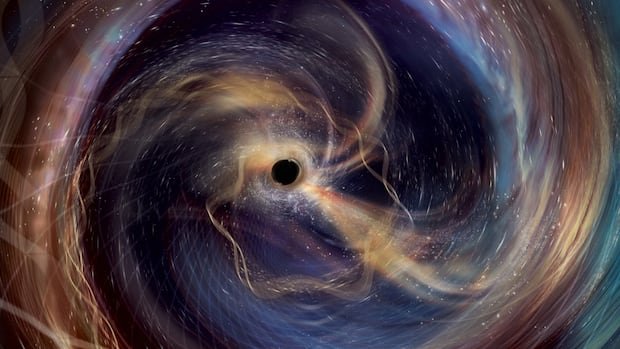Gravitational wave astronomy has unveiled remarkable cosmic events like black hole and neutron star collisions over the last decade through the use of LIGO, the Laser Interferometer Gravitational-wave Observatory. Despite its significant impact on astronomy, LIGO faces a current threat to its operations.
LIGO stands as the latest advancement in a series of innovative tools that have reshaped our understanding of the universe since Galileo Galilei turned his homemade telescope towards the sky in 1609. Galileo’s telescope revolutionized our perception of celestial bodies, shifting them from divine entities to moons, planets, and stars.
In 1932, Karl Jansky serendipitously discovered a new perspective on the cosmos while investigating static interference in shortwave transatlantic voice communications. By tracking the interference’s movement across the sky, Jansky identified the source as emanating from the center of our Milky Way galaxy outside our solar system, marking the birth of radio astronomy.
The advent of radio astronomy unveiled an active universe, showcasing invisible radio waves emitted by energetic cosmic events like supernova explosions, rotating neutron stars, and galaxy collisions. Other instruments operate across the electromagnetic spectrum, including X-rays, ultraviolet light, and tools like the James Webb Space Telescope utilizing infrared radiation to explore the universe’s farthest reaches.
Moving beyond the electromagnetic spectrum, the Sudbury Neutrino Observatory in Ontario detected invisible neutrinos emitted by the sun passing through the Earth, a discovery that led to Canadian physicist Art McDonald receiving the Nobel Prize in Physics in 2015. Recent upgrades at the Sudbury observatory have expanded its capabilities to study exotic neutrinos.
Einstein’s prediction of space distortion due to massive objects’ gravitational pull introduced the concept of gravitational waves, initially deemed undetectable due to their minuscule size. However, LIGO achieved the groundbreaking detection of gravitational waves in 2015 using twin facilities equipped with laser beams and mirrors in four-kilometer tunnels. These waves originated from the collision of two black holes 1.3 billion light years away.
Gravitational waves offer a unique window into the universe, unfettered by obstacles that impede light transmission. Collaborative efforts from international observatories like Virgo in Italy and the Kamioka Gravitational Wave Detector (KAGRA) in Japan have unveiled hundreds of cosmic events. However, impending budget cuts under U.S. President Donald Trump threaten LIGO’s future, potentially necessitating the shutdown of vital detectors.
Despite challenges, teams in the U.S. and Europe are developing next-generation gravitational wave detectors with enhanced sensitivity to capture quieter astronomical phenomena. Unsolved cosmic mysteries like dark matter and dark energy continue to intrigue scientists, with Canada spearheading efforts to solve the dark matter enigma through advanced detectors at SNOLAB in Sudbury.
The quest for understanding the universe’s hidden facets persists, offering boundless opportunities for discovery.
